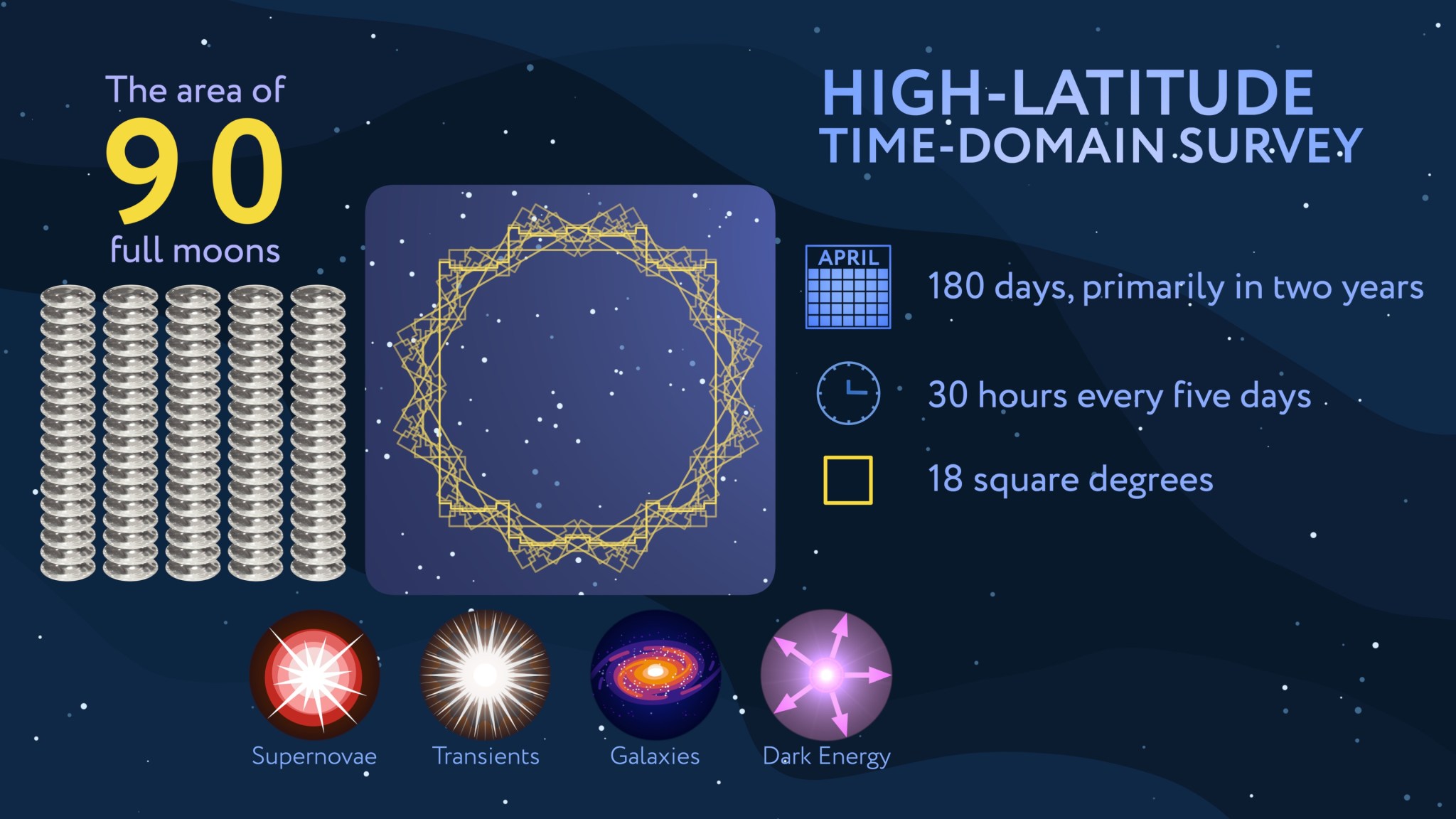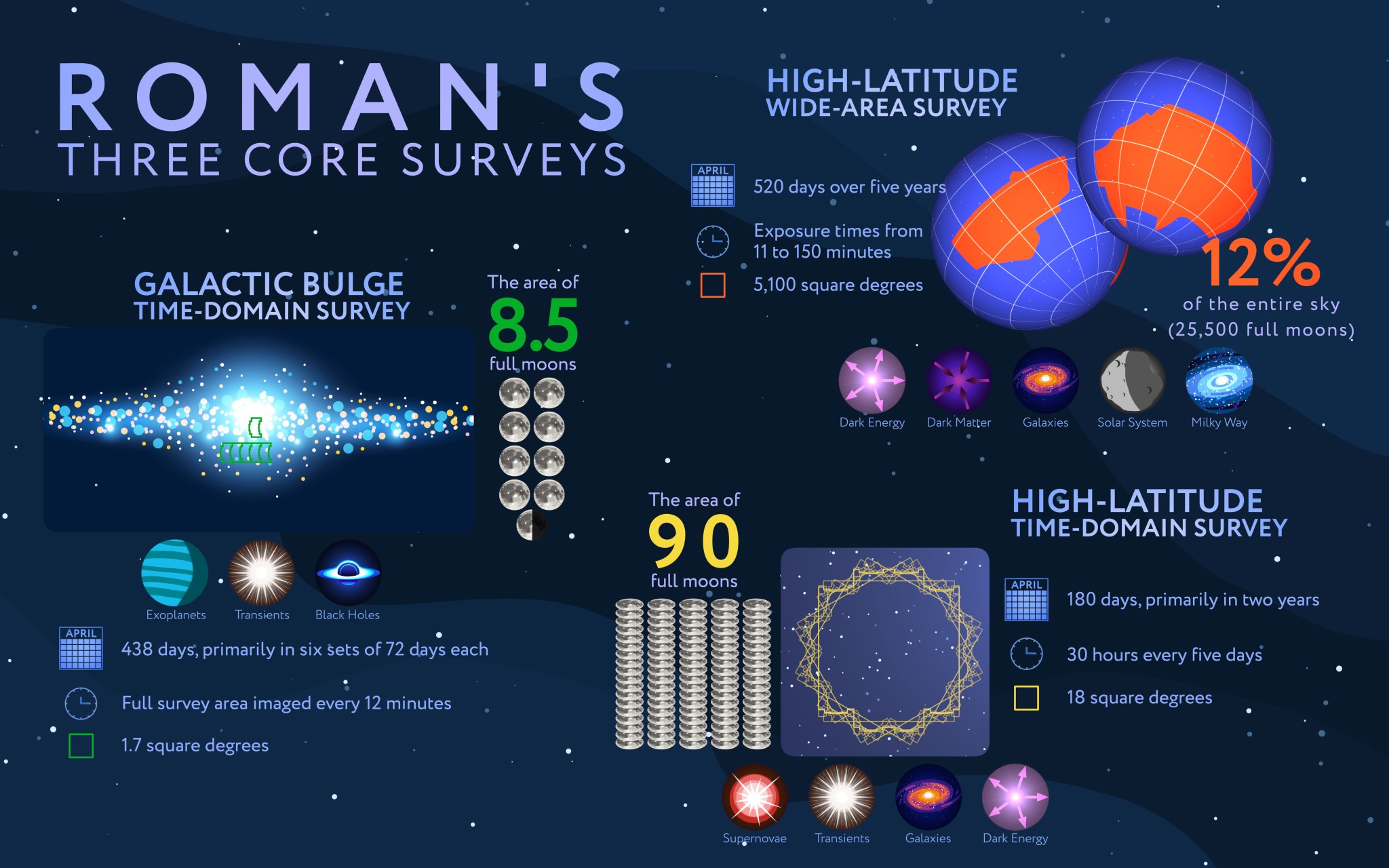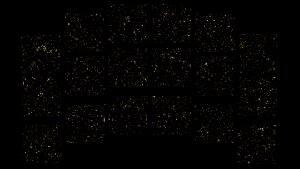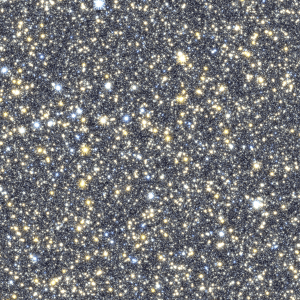NASA’s Nancy Grace Roman Space Telescope team shared Thursday the designs for the three core surveys the mission will conduct after launch. These observation programs are designed to investigate some of the most profound mysteries in astrophysics while enabling expansive cosmic exploration that will revolutionize our understanding of the universe.
“Roman’s setting out to do wide, deep surveys of the universe in a way that will help us answer questions about how dark energy and dark matter govern cosmic evolution, and the demographics of worlds beyond our solar system,” said Gail Zasowski, an associate professor at the University of Utah and co-chair of the ROTAC (Roman Observations Time Allocation Committee). “But the overarching goal is that the surveys have broad appeal and numerous science applications. They were designed by and for the astronomical community to maximize the science they’ll enable.”
Roman’s crisp, panoramic view of space and fast survey speeds provide the opportunity for astronomers to study the universe as never before. The Roman team asked the science community to detail the topics they’d like to study through each of Roman’s surveys and selected committees of scientists across many organizations to evaluate the range of possibilities and formulate three compelling options for each.
In April, the Roman team received the recommendations and has now determined the survey designs. These observations account for no more than 75 percent of Roman’s surveys during its five-year primary mission, with the remainder allocated to additional observations that will be proposed and developed by the science community in later opportunities.
“These survey designs are the culmination of two years of input from more than 1,000 scientists from over 350 institutions across the globe,” said Julie McEnery, Roman’s senior project scientist at NASA Goddard. “We’re thrilled that we’ve been able to hear from so many of the people who’ll use the data after launch to investigate everything from objects in our outer solar system, planets across our galaxy, dark matter and dark energy, to exploding stars, growing black holes, galaxies by the billions, and so much more.”
With all major hardware now delivered, Roman has entered its final phase of preparation for launch, undergoing integration and key environmental testing at NASA Goddard. Roman is targeted to launch by May 2027, with the team working toward a potential launch window that opens in October 2026.

High-Latitude Wide-Area Survey
Roman’s largest survey, the High-Latitude Wide-Area Survey, combines the powers of imaging and spectroscopy to unveil more than a billion galaxies strewn across a wide swath of cosmic time. Roman can look far from the dusty plane of our Milky Way galaxy (that’s what the “high-latitude” part of the survey name means), looking up and out of the galaxy rather than through it to get the clearest view of the distant cosmos.
The distribution and shapes of galaxies in Roman’s enormous, deep images can help us understand the nature of dark energy — a pressure that seems to be speeding up the universe’s expansion — and how invisible dark matter, which Roman will detect by its gravitational effects, influences the evolution of structure in our universe.
For the last two years, researchers have been discussing ways to expand the range of scientific topics that can be studied using the same dataset. That includes studying galaxy evolution, star formation, cosmic voids, the matter between galaxies, and much more.

High-Latitude Time-Domain Survey
Roman’s High-Latitude Time-Domain Survey can probe our dynamic universe by observing the same region of the cosmos repeatedly. Stitching these observations together to create movies can allow scientists to study how celestial objects and phenomena change over time periods of days to years.
This survey can probe dark energy by finding and studying many thousands of a special type of exploding star called type Ia supernovae. These stellar cataclysms allow scientists to measure cosmic distances and trace the universe’s expansion.
“Staring at a large volume of the sky for so long will also reveal black holes being born as neutron stars merge, and tidal disruption events –– flares released by stars falling into black holes,” said Saurabh Jha, a professor at Rutgers University in New Brunswick, New Jersey, and ROTAC co-chair. “It will also allow astronomers to explore variable objects, like active galaxies and binary systems. And it enables more open-ended cosmic exploration than most other space telescopes can do, offering a chance to answer questions we haven’t yet thought to ask.”

Galactic Bulge Time-Domain Survey
Unlike the high-latitude surveys, Roman’s Galactic Bulge Time-Domain Survey will look inward to provide one of the deepest views ever of the heart of our Milky Way galaxy. Roman’s crisp resolution and infrared view can allow astronomers to watch hundreds of millions of stars in search of microlensing signals — gravitational boosts of a background star’s light that occur when an intervening object passes nearly in front of it. While astronomers have mainly discovered star-hugging worlds, Roman’s microlensing observations can find planets in the habitable zone of their star and farther out, including analogs of every planet in our solar system except Mercury.
The same set of observations can reveal “rogue” planets that drift through the galaxy unbound to any star, brown dwarfs (“failed stars” too lightweight to power themselves by fusion the way stars do), and stellar corpses like neutron stars and white dwarfs. And scientists could discover 100,000 new worlds by seeing stars periodically get dimmer as an orbiting planet passes in front of them, events called transits. Scientists can also study the stars themselves, detecting “starquakes” on a million giant stars, the result of sound waves reverberating through their interiors that can reveal information about their structures, ages, and other properties.
Data from all of Roman’s surveys will be made public as soon as it is processed, with no periods of exclusive access.
“Roman’s unprecedented data will offer practically limitless opportunities for astronomers to explore all kinds of cosmic topics,” McEnery said. “We stand to learn a tremendous amount of new information about the universe very rapidly after the mission launches.”
Download high-resolution video and images from NASA’s Scientific Visualization Studio
By Ashley Balzer
NASA’s Goddard Space Flight Center, Greenbelt, Md.
Media contact:
Claire Andreoli
NASA’s Goddard Space Flight Center, Greenbelt, Md.
301-286-1940



